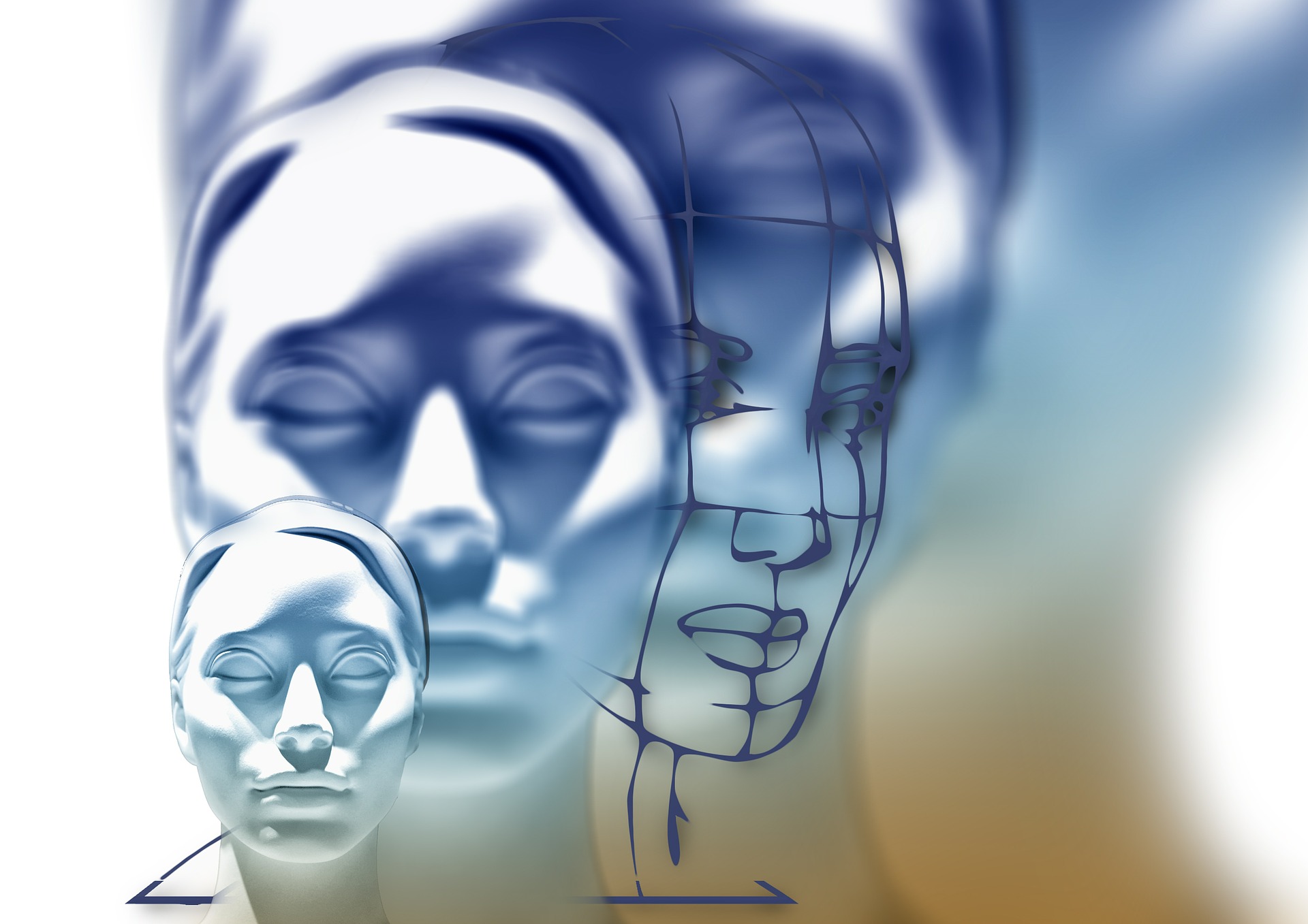Sound and Frequency
by Del Hungerford
“In the beginning, God hovered [vibrated and moved] over the earth.” The entire universe was created with sound and frequency. (Genesis 1:1-2) As co-creators in Christ, we step into God’s sounds that resonate from the beginning of time answering creation’s groaning. (Romans 8:19-23). How do we respond to creation’s groaning? In John 14, Jesus tells his disciples that He’s the Way, the Truth, and the Life. He then says that He’s in the Father and we are in Him. I call this the “in Him reality.” Since we’re “in Him,” we are now responsible for carrying out a mandate to fulfill Romans 8:21 where “creation itself will be liberated from its bondage to decay and brought into the freedom and glory of the children of God.” (NIV) This is a restoration process in which we get to participate in the kingdom business, “God and Sons.”

Throughout Genesis 1, God creates the heavens and the earth. How did he do it? First, He framed the existence of the universe through intention by securing a three-cord strand that’s not easily broken. (Ecclesiastes 4:12) His thought to create, followed by the intention of setting creation, and finally the action of hovering and speaking was God’s three-stranded cord. “Cord” comes from the Hebrew word “chut” (pronounced Khoot), that refers to weaving, threads, a connection or something that binds. To a Hebrew, cords “symbolized connection and continuity, both physically and metaphorically.” (Strong’s Lexicon, 2339)
According to quantum physics, the “observer effect” is what changes a particle into a wave. God “observed” the heavens and the earth and continues to do so. This is the “continuity” mentioned in the Strong’s definition of “cord.” John 1:1-5 provides further details, “In the beginning was the Word, and the Word was with God, and the Word was God. He was with God in the beginning. Through him all things were made; without him nothing was made that has been made. In him was life, and that life was the light of all mankind. The light shines in the darkness, and the darkness has not overcome it.” (NIV) I dare say that because of the “observer effect,” if God ever chose to no longer observe and tend to the universe, it would collapse and cease to exist. Even in this scripture, we know Jesus was with God in the beginning and that the light within Him continues to shine. In that, it all began with a frequency – the frequency of a thought, followed by an intention (framed blueprint), and then the creation. Genesis 1 and John 1 are the three-stranded cord “recipe” that allows creation to exist.
For those who don’t know me, I’m a retired classical musician who performed in professional ensembles and taught in public schools and universities. As a Son of God, I began to see some interesting connections between creation and music theory. Where there’s a pattern, follow the path and see where it leads. I found a video from the World Science Festival in 2014 where cosmologist Mark Whittle explains the Big Bang, which isn’t really a big bang. It’s more like an expansion that continues to resonate in the cosmos today (a measurable frequency in Hz). In the video, Whittle plays the note, many octaves higher than the original, on a flute. The note is an F# near the A=440 concert pitch (for enquiring minds who want to know). At first, this only fascinated me since I had nothing to connect it with. A few years later, I discovered there are musical frequencies associated with the Hebrew letters. I explain this in my “Frequencies of Creation” series on the Healing Frequencies Music website.Everything in creation follows patterns. We see it in math, science, art, color, sound, the flow of water, etc. Once I found that the gematria (numbering system) within the Hebrew letters lined up perfectly with the musical harmonic series, I accidentally (or did I?) ran across the World Science Festival video again. Whittle says the first harmonics that came out of the initial F# were the interval of a minor 3rd followed by the Major 3rd. It didn’t follow the traditional musical harmonic series pattern. To be fair, every sound has its own “voice print” where it utilizes various parts of the harmonic series.

The musical frequencies of the Hebrew letters are more about musical “keys,” not specific notes. The name of God (tetragrammaton) includes the letters Yod, Heh, Vav, Heh (YHVH for future reference). When taking the musical keys of those letters (E, E, G, E), they create the musical interval (distance between two notes) of a minor 3rd between the E-G. Out of the sound of creation, the voice of Yahweh was heard. Next, Yeshua sits in the middle of that name as the “Shin.” We now have YHSVH (E, E, Eb, G, E). Eb to G is a Major 3rd and G back down to E is a minor 3rd. Therefore, the voice of God came out of the Big Bang that morphed into the voice of Yeshua. Because the original sound of F# with its two harmonics (A and A#) continue to resonate throughout the cosmos, we are continually wrapped in the voices of Yahweh and Yeshua.
The “voice print” of the Divine Creator is still evident in the universe today. As Sons of God, we step into our call (mandate, blueprint, etc.) to bring creation out of bondage and decay through a restorative process by partnering with God’s sound and frequency through a variety of methods (including worship) you’ll see throughout this site. When placing our individual puzzle piece into the puzzle, we activate the necessary tools to fulfill what we’ve been called to do as Sons of God.Worship
What is worship? We think it’s going to church on a Sunday morning where a team of musicians lead the congregation in a set of songs that prepares the heart for the upcoming sermon. Worship is a “state” of the heart. It doesn’t come from walking into a Sunday service expecting the worship team to “lead you in.” Why is that? To fully understand worship, we must first understand that we are to live a “lifestyle of worship.” We become worship through our actions of thankfulness, adoration, gratitude, etc. Music is only a small part of praise and worship.
When we learn to live from an attitude of worship, that changes things! It was a long time before I truly understood worship even though I was on various worship teams for nearly 30 years. At first, it was all about joining a group of people and working in unity to bring another group of people into a place where they could step into the presence of God. Honestly, that's not a heavenly model. But that's the legacy of worship we've worked with for years.
I know of times when a worship team didn't care what people in the congregation did and simply went about what they felt the Lord was leading them to do. Those worship services were the best, even though some of the musicians weren't so good. Then, in other worship services, the musicians were excellent, but the worship fell flat. It was more of a performance than worship. Over the last several years, the move to entertain people to keep them in the pews has far outweighed the need for true worship.
When we draw, paint, write, sing, play an instrument, dance, move, or create something, we can function with an attitude of worship. We do that by using a cliche phrase... "as unto the Lord." See yourself in that place in the Throne Room (or other places you're led to go) where you're creating from a heavenly position and responding by what you're doing there, not here on earth. You'll be amazed at how it creates something new within you.
We are told throughout scripture to “sing a new song unto the Lord.” (Psalm 96:1, Psalm 98:1, Isaiah 42:10) This is done both corporately and individually. It’s about heartfelt worship and praise with enthusiasm and a fresh perspective. Spontaneous worship (the new song) can reflect a new understanding of God's character, a deeper appreciation for His blessings, or a heightened awareness of His power and glory.
In NW Ekklesia, we first go before the Lord as described in Revelation 4:1. God is as close as the air we breathe (Genesis 2:7) so His presence is around us all the time. We don’t need to bring His presence into a room because it’s already there. As I describe in my class Kingdom Worship Basics, we go to the Throne of God and begin corporate worship from there. Our musicians “tune in” as we begin to engage with the sounds and frequencies of the Throne Room. What occurs next may translate to dance, artwork, music, singing, movement, or something else creative. If we have a sense of direction before we begin, we may start with an activity (usually a song) everyone knows but eventually we morph into spontaneous expression. Our goal is to foster an attitude of worship in whatever we do.Conclusion
“Praise and worship” are attitudes of the heart. Praise in Hebrew is ידה yadah {yaw-daw'} – give thanks, make confession, thanksgiving, cast, cast out, shoot, to throw, to shoot, to cast, cast down, throw down, to give thanks, laud, praise, to confess, confess (the name of God), to confess (sin).
Worship is the Hebrew word שחה shachah {shaw-khaw'} – bow, bow down, obeisance, reverence, fall down, stoop, crouch, to bow down, prostrate oneself before superior in homage or before God in worship or before false gods or before angels. False gods are those things in our lives that take away from our relationship with God (jobs, stress, family drama, careers, etc.).

Frequency is sound and sound is frequency. We measure sound through Hz and color through nanometers while other frequencies are measured in MHz, GHz, etc. Thoughts, intentions, and actions also create frequencies which affect the attitude of the heart. Worship is frequency/sound that comes from the attitude of the heart. An “attitude of gratitude” is a necessary ingredient in pure worship. Therefore, you will see worship discussed in other areas and topics throughout this website because worship is a lifestyle that incorporates our spirit, soul, and body.









